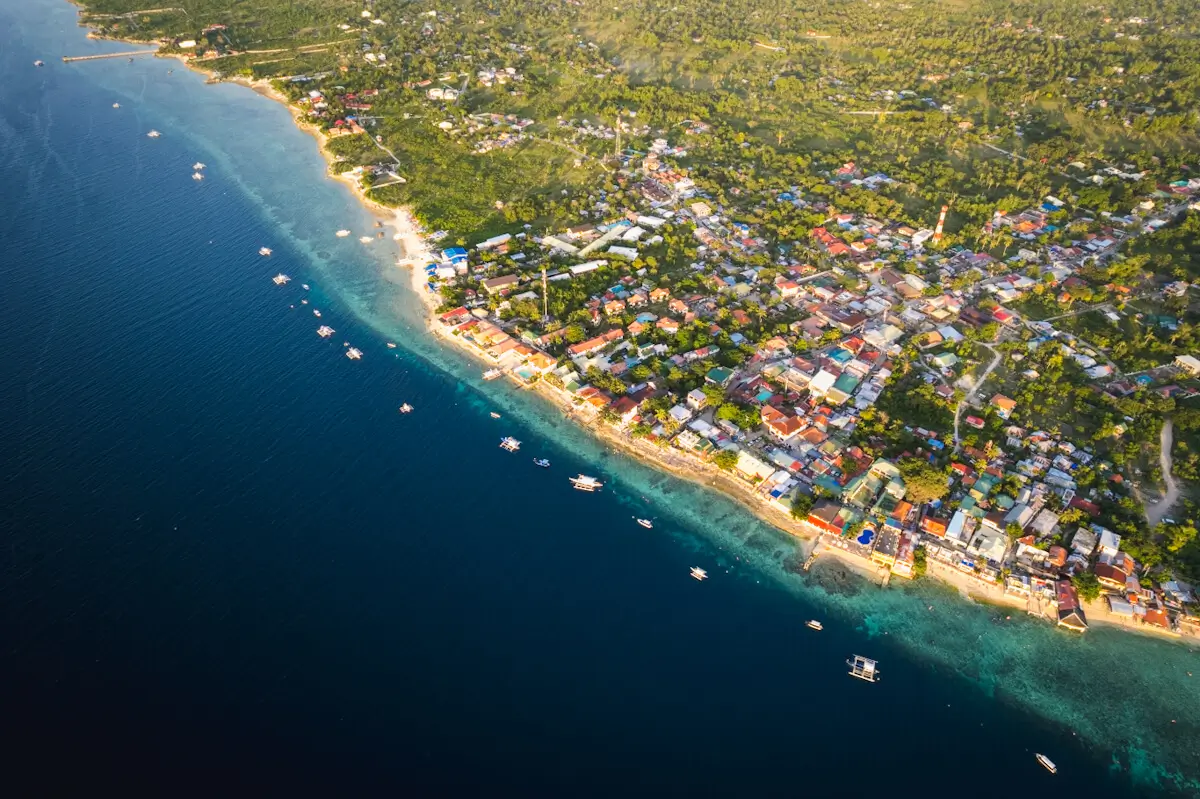Lusno Falls in the highlands of Ronda, Cebu, is one of the nearest waterfalls to Moalboal and remains one of the least-visited waterfalls on Cebu in the Philippines.
I visited Lusno Falls on a day-trip from Moalboal, and combined the trip with another waterfall just downstream on the same river, Cambanog Falls. Unlike all of the waterfalls south of Moalboal, which are all largely concentrated alongside the same highway, Lusno Falls is north of Moalboal and is nowhere near as well-known. At mid-day I had Lusno Falls entirely to myself for the first half hour, after which point I was joined by only one other small group.
Most online resources on Lusno Falls don’t provide very specific instructions and are a little out-of-date. Contrary to what is written online, there is now an entrance fee to Lusno Falls. The hike to the falls itself lacks signage however, and it’s a little easy to get lost if you don’t know the way.
Continue reading this blog post for all the necessary information to visit Lusno Falls for yourself. I’ve shared where to find it, how to get there, the entrance fee, and more.
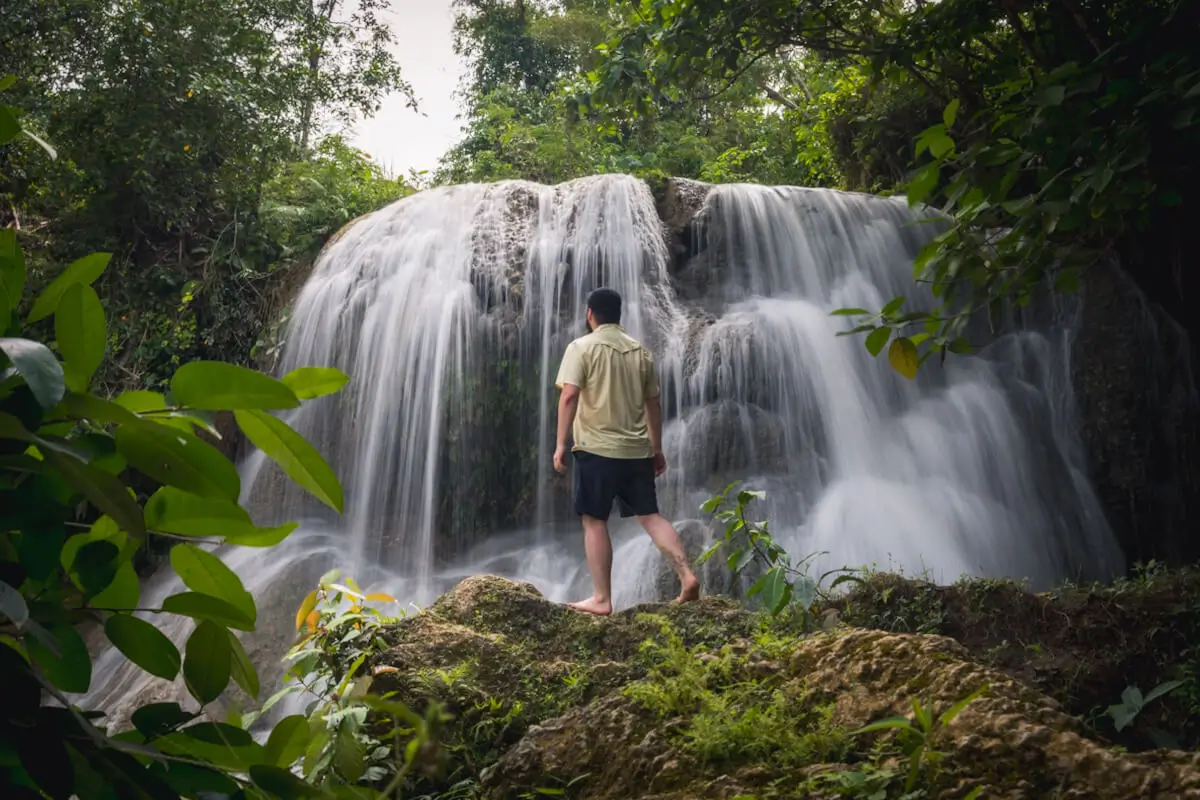
About Lusno Falls
Lusno Falls features a distinct bulbous round appearance similar to some other Cebu waterfalls, Aguinid Falls in particular. This is because the limestone-rich karst landscape of Cebu has incredibly mineral-rich water. When the water crashes over the falls, it loses the ability to hold onto dissolved calcium carbonate, and it’s deposited as solid rock. Every year the round formations grow, at a maximum potential speed of a few centimetres every month.
If you’re heading to Lusno Falls from Moalboal, the drive is incredibly scenic and the views of Cebu’s highland countryside are breathtaking. Depending on at what point along the road you choose to hop off your bike and begin walking, the hike to Lusno Falls is not very long, and took us 20-30 minutes each way. The river itself is mostly very shallow at the base of the falls, however there is one small swimming hole on the right side of the falls. It’s possible to cross the river and approach Lusno Falls, but be super careful as the rocks are very slippery.
Once you reach Lusno falls, I highly highly suggest also making the further trek to Cambanog Falls, which is located downstream on the same river. It’s even less frequently visited than Lusno Falls, and is at least as impressive. Given the length of the drive to reach just one of the falls, I figure it’s worth visiting the second.
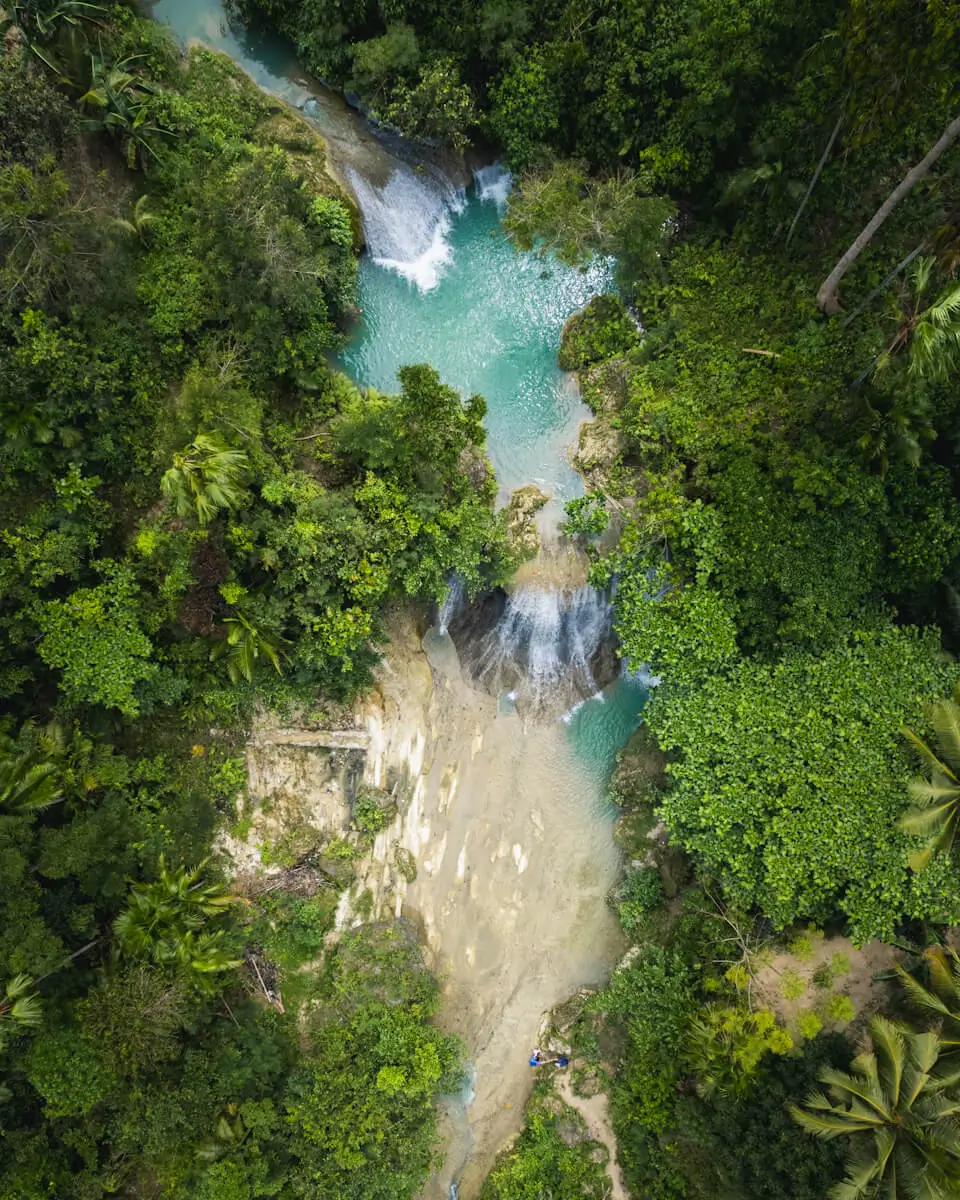
Lusno Falls Entrance + Guide Fees
Most online resources currently claim that there is no entrance fee for Lusno Falls, however as of 2025 that information is out of date. The entrance fee for Lusno Falls is now 50 PHP per person. There is no parking fee, at least not where we parked. The waterfall is still pretty undeveloped and uncommercialized, and hiring a guide is not required, or verbally offered. However, I did see another group accompanied by a local guide, so they are available. If you’re interested in hiring one, I’d suggest asking the person collecting the entrance fee for assistance.
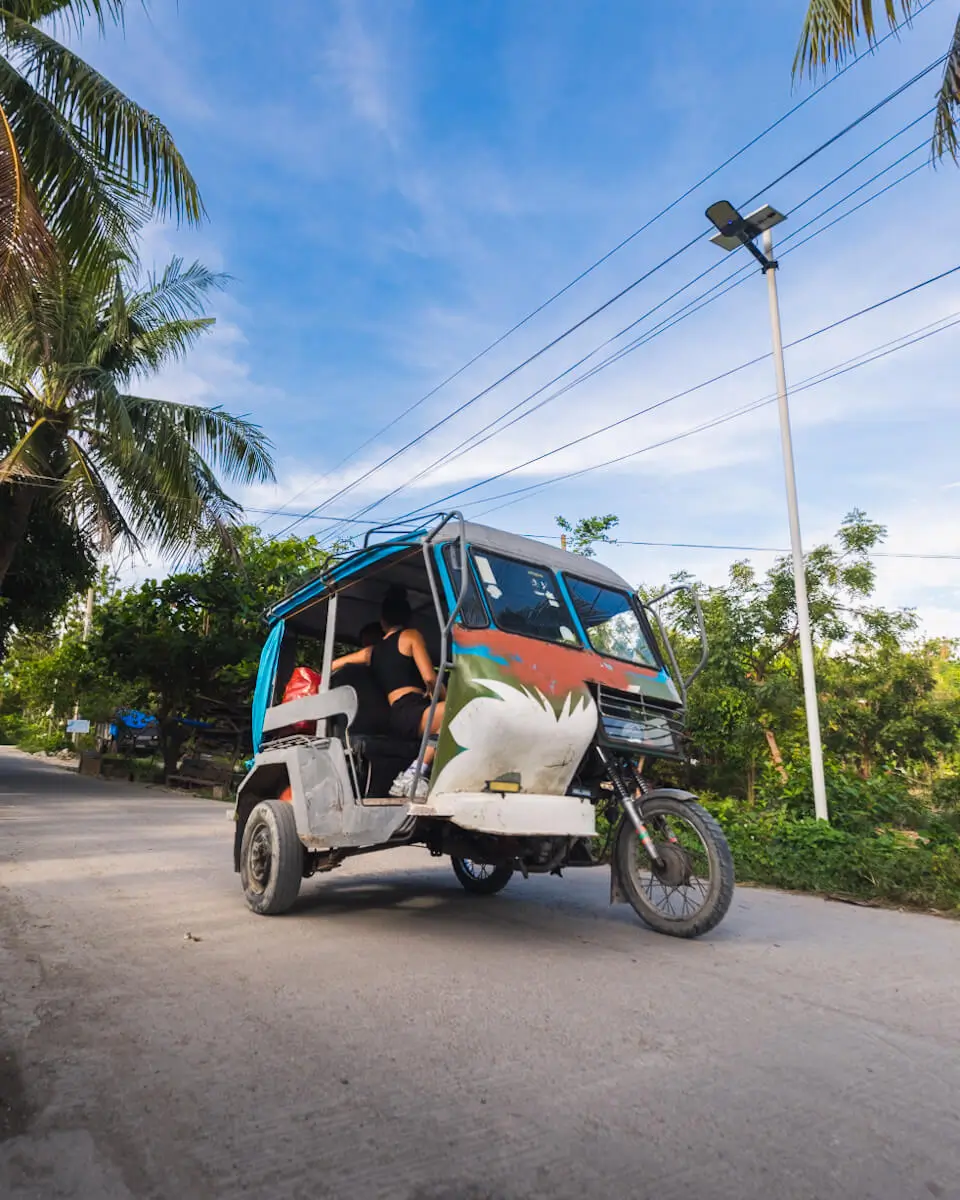
How to Get to Lusno Falls
Lusno Falls is located in the highlands of Cebu, northeast of Moalboal. Unlike the more famous waterfalls south of Moalboal, which are closer to the coast, Lusno feels a little more in-the-middle-of-nowhere. For this reason it sees far fewer visitors.
If you’re staying on Cebu and planning on exploring all the waterfalls and beaches located in the south half of the island, Moalboal is the best place to base yourself. It’s easy to get there from Cebu City by bus or private transfer, and the town has plenty of restaurants, hotels, and activities.
Lusno Falls is located an 20 km from Moalboal, and while Google Maps suggests it should take about forty minutes, it was more like an hour for us. The mountain road was windy and unfamiliar (though incredibly scenic) and I probably drove slower than the locals do.
From Moalboal, follow the Santander – Barili – Toledo Road north. After about 7.5 km you’ll reach Ronda, where the highway turns to the left. At this crossroads you’ll continue straight onto Ylala Road. From here you go straight for 15 km, following the windy road up into the highlands. It’s obvious that the waterfall isn’t a super popular destination among foreign tourists, because plenty of locals along the road will wave and greet you. Immediately after passing the Anajao Barangay Hall, you’ll see the sign for the turnoff for Lusno Falls, and likely the man collecting entrance fees. Continue straight down this road until nearly the end, or as far as you’re comfortable driving, before pulling off to the side.
Up until you turn off after the Barangay Hall, the road is concrete and easy to ride on, though there are lots of quick turns as it ascends up into the mountains. You’ll want to drive slowly anyway though, because the pastoral views from up here are fantastic. Once you turn off onto the final road for the waterfalls, you’ll quickly wind up riding on rocks and then dirt, potentially mud. Fortunately at this point you can pull off and begin your walk at any time.
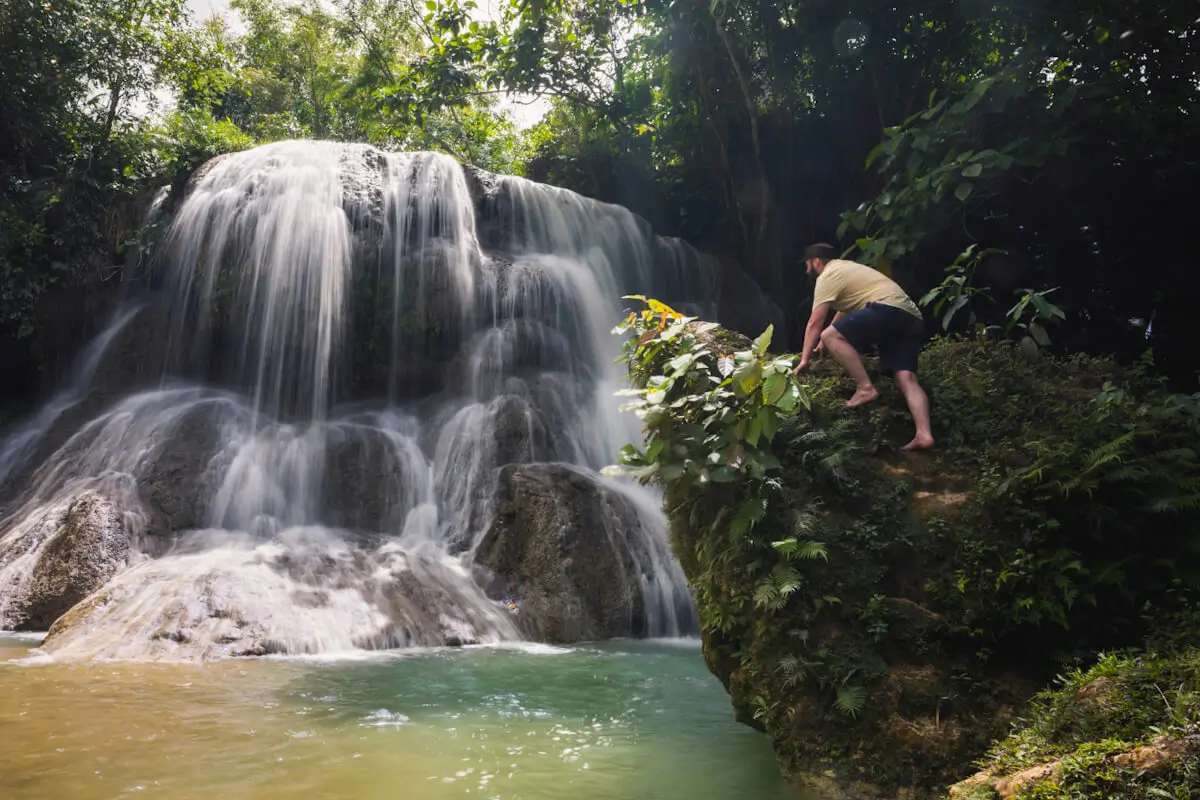
Tips for Visiting Lusno Falls
Practice Leave No Trace principles by carrying out all your garbage and avoiding any actions that could harm the environment like leaving graffiti. That’s just trashy and gross.
As a visitor, you are responsible for helping to protect Lusno Falls. Showing care for preserving natural attractions helps keep these sites pristine and also encourages locals to prioritize sustainable practices. Always pay entrance and guide fees—these often fund local conservation and create jobs for the local community. Go a step further by giving an additional donation, explicitly stating that it’s for conservation. Even a small amount that might not be significant to you can mean a lot to the locals. Asking how fees or donations are used for preservation shows locals that tourists value these efforts and motivates them to continue protecting the area.
Locals try to give you what they think you want in order to earn a living from tourism, and they will happily cut down trees, exterminate wildlife, pour concrete, and build trashy overpriced restaurants when they think that’s what tourists want most. You can reshape this perception—show through your words and spending that you value the natural beauty and authenticity of the area over commercialization.
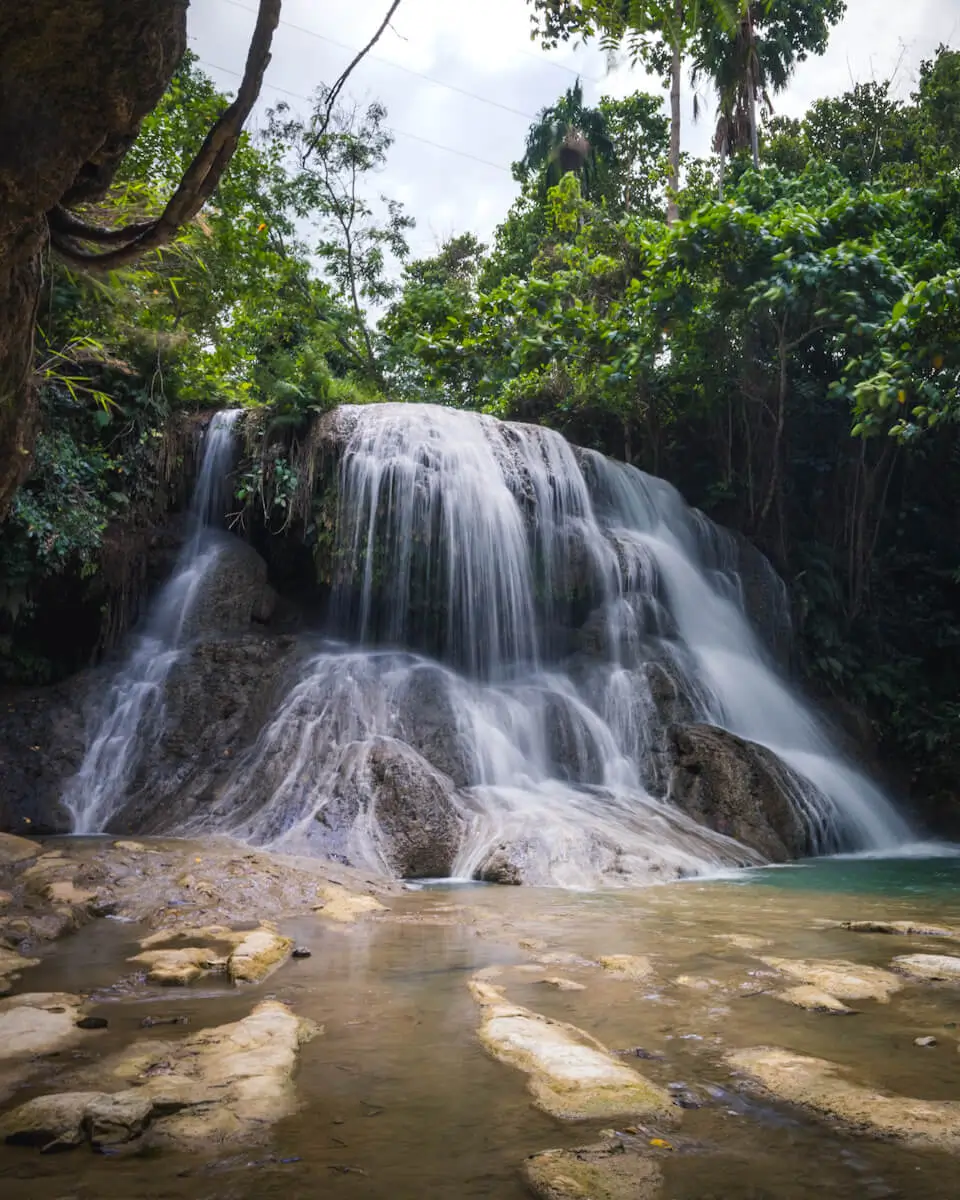
When to Visit Lusno Falls
The best time to visit Lusno Falls is during the dry season, which lasts from December to May. This period offers warm, sunny weather with fewer rainy days, making it ideal for outdoor activities and exploring the island. If you want to see the waterfall at its peak though, it’s best to visit at the start of the dry season, when it’s still benefitting from the past six months’ worth of rain.
Year-round, temperatures in the area stay consistently warm, typically around 25°C to 32°C, so you can expect a tropical climate no matter when you visit. If you plan to travel outside the dry season, be ready for moderate but steady rainfall and pack some rain gear to stay comfortable during your trip.
Because Lusno Falls is still relatively unknown, and due to its location is unlikely to become the next Kawasan Falls, I imagine it would be possible to visit at any time of day and potentially get the falls all to yourself. That said, if you want to guarantee being alone, I suggest visiting in the morning.
